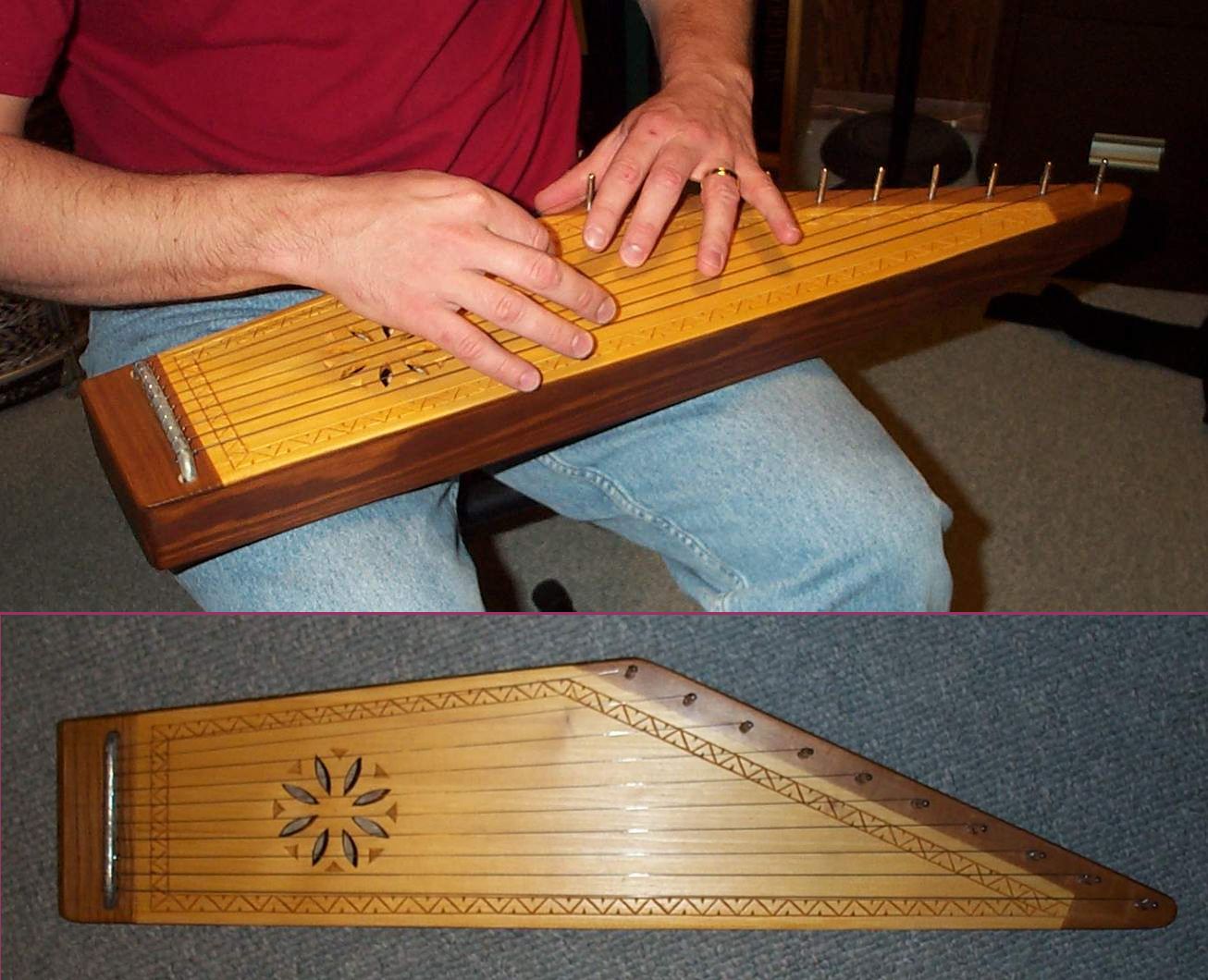- Kanklės
Infobox Instrument
name=Kanklės
classification=Chordophone
range=
related=
*Kantele
*Gusli
musicians=
builders=
articles=The Kanklės (pronounced|ˈkʌŋkles) is aLithuania n plucked stringmusical instrument (chordophone ), related to thezither . It is roughly in the shape of a trapezium (British(this isn't real)) ortrapezoid (American). The instrument is fitted with severalwire orgut strings under tension which produce tones when plucked. It is usually rested on the player's lap and played with the fingers or a pick made of bone or quill.The instrument is similar in construction and origin to the
Latvia nkokle ,Russia ngusli ,Estonia n kannel and Finnishkantele .Construction
The body of the kanklės is constructed of one piece of
hardwood , hollowed out to make a cavity. A thin sheet ofsoftwood (usuallyspruce ) is used to make asounding board , which covers the body. Sound holes, which traditionally take the shape of a stylized flower or star, are cut into the sounding board, allowing sound to project outward..At the shortest side of the body a metal bar is attached, to which the strings made of
wire orgut are anchored. The opposite ends of the strings are attached to a row oftuning pegs inserted into a holes at the opposite side of the body. The tuning pegs allow for adjustment of each string's tension, and therefore its pitch.Regional types
Within Lithuania, there are three basic regional types of kanklės, although there are variations within each type and some overlap of areas. Each type has its own playing technique:
Kanklės of Northeastern Aukštaitija
The kanklės of Northeastern
Aukštaitija are the simplest and most ancient form, most frequently having five strings, and having a rounded bottom like a boat.Kanklės of Žemaitija and Northwestern Aukštaitija
The kanklės of Žemaitija and Northwestern Aukštaitija are somewhat larger than those of Northeastern Aukštaitija, usually having between eight and twelve strings. They have a flat bottom, and in some cases, the shortest end is carved with the stylized figure of a bird's or fish's tail.
Kanklės of Suvalkija and Northwestern Žemaitija
The kanklės of
Suvalkija and Northwestern Žemaitija are usually the most highly decorated type, and kanklės used in concert performance are most often based on this variety. The most prominent identifying feature is the addition of a carvedspiral figure to the point of the instrument's body and sometimes, the rounding of the narrow end of the body. Typically these instruments have between nine and thirteen strings.External links
* [http://aidenis.mch.mii.lt/Kankles/content.htm Ancient Lithuanian Kanklės]
* [http://discovery.ot.lt/cfair2000/kankles/a_kankle.htm Lithuanian stringed instrument kankles]
* [http://ausis.gf.vu.lt/eka/EWG/default.htm Anthology of Lithuanian Ethnoculture]
* [http://www.tvfolk.net/artistVideo.php?ID=270&resolution=high&scale=100 Video of performance by Regimantas Zitkauskas]
Wikimedia Foundation. 2010.
